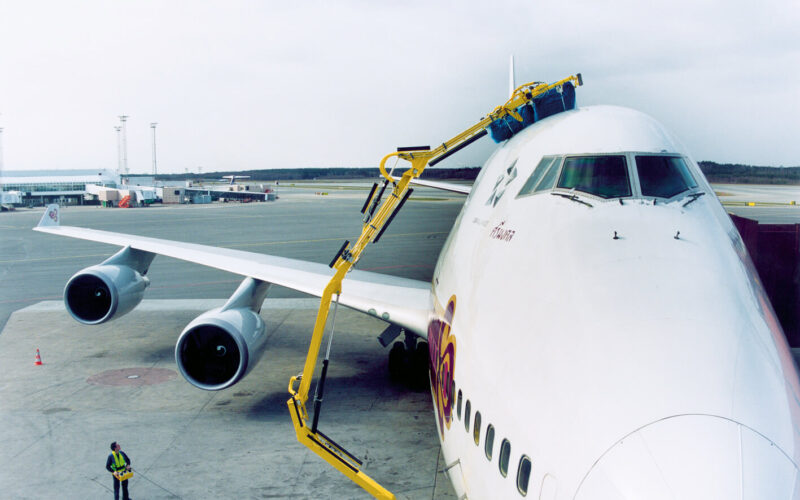Each year airlines begin new sustainability initiatives, experiment with biofuels, and offset their carbon emissions on selected flights; yet, sustainability should not only be a topic of discussion when an aircraft is in the air but also when it’s on the ground.
In just one year, a Boeing 777, 787, Airbus A330, and A350, burn an extra 265,000 litres of fuel due to the 1% increase in drag. As a result, a full year’s operations of such an aircraft costs US$77,600 more than during the previous year. A dirty aircraft exterior is full of microscopic patches of dust and mud that impact the airliner’s operational efficiency by creating turbulent airflow across the whole fuselage. While the problem of additional drag is not new, there are no solutions to combat it other than performing regular cleaning of the aircraft’s exterior.
Reducing drag – through cleaning – on aircraft fuselage, wings, engine cowlings, and stabilizer brings another challenge; how to remain sustainable while performing the exterior cleaning process? A popular, yet wasteful pressurized water cleaning technique requires more than 11,300 litres of water to clean one Airbus A380 aircraft and more than 9,500 litres to clean a Boeing 777. Traditionally, aircraft are cleaned four to five times per year, and with more than 48 thousand airframes in the world, the amount of water used each year is immense. As a result, the positives of clean fuselages are outweighed by the negatives of wasteful usage of expensive and environmentally important resources.
This raises a question: whether it is possible to be eco-friendly in the aviation industry when one solution brings even more challenges than benefits? While the answer may look complicated, the definite answer is yes. The use of robots in household applications has proven that robotification is an inevitable and much-needed process to achieve even more efficient operational performance.
One of the solutions to address the inefficient and time-consuming process of washing an aircraft fuselage is to employ an aircraft exterior cleaning robot. The market offerings like Nordic Dino, have been perfected and adapted to work with a wide range of aircraft fuselage types. Such robots are designed to minimize the use of water and detergent on every wash; saving more than 30% more water when compared to traditional washing methods. At the same time, built with sustainability in mind, the robots can be equipped with electric motors, further minimizing the environmental impact.
“Sustainability and eco-friendliness should not be viewed as challenges or impossible achievements in the aviation industry. By utilizing the right equipment, finding alternatives to polluting methods, and increasing efficiency at every step possible, companies could come one step closer to operational efficiency as well as sustainability targets. Our offering, Nordic Dino can reduce the use of water and detergent and can be powered by electricity, reducing carbon and nitrogen dioxide emissions. By the robotification of the cleaning process we present a solution to MROs and dedicated aircraft cleaning companies to become green.” – commented Jan Brunstedt, CEO of Aviator Robotics AB.

